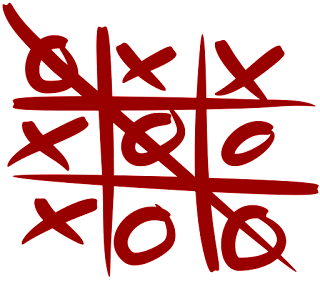________________
The word "Muscle" came from Middle French "muscle" and directly from Latin "musculus" literally meaning "small mouse". This was because the shape and movement of many muscles (notably biceps) resembled small mice
Karen is a pejorative term for a white woman seeming to be entitled or demanding beyond the scope of what is normal. The term also refers to memes depicting white women who use their privilege to demand their own way. Depictions also may include demanding to "speak to the manager", being racist or sporting a particular bob cut hairstyle. A notable example was the 2020 Central Park birdwatching incident.
In African-American culture, there is a long history of calling a meddlesome white woman by a certain name. In the antebellum era (1815–1861), she was referred to as "Miss Ann". In the early 1990s, "Becky" was used. As late as 2018, before the use of "Karen" caught on, alliterative names matching particular incidents were used, such as "Barbecue Becky", "Cornerstore Caroline", and "Permit Patty".
For the term "Karen", several possible origins have been proposed. Early uses of Karen as a joke punchline include the airheaded character Karen (played by Amanda Seyfried) from the 2004 film Mean Girls, Dane Cook's 2005 sketch "The Friend Nobody Likes" on his album Retaliation, and a 2016 Internet meme regarding a woman in an ad for the Nintendo Switch console who exhibits antisocial behavior and is given the nickname "antisocial Karen". In December 2017, Karen memes regarding entitled women went viral on Reddit, the earliest being from user karmacop9, who ranted about his ex-wife Karen. The posts led to the creation of the subreddit r/FuckYouKaren, containing memes about the posts, and inspiring spinoffs including r/karen and r/EntitledKarens dedicated to criticizing Karens.
A more pointed explanation, which involves race, is the expression originates among Black people to refer to unreasonable white women. The term was popularized on Black Twitter as a meme used to describe white women who "tattle on Black kids' lemonade stands" or who unleash the "violent history of white womanhood". Bitch magazine described Karen as a term that originated with Black women but was co-opted by white men.
By the way:
In December 2019, Australian media reported that in the town of Mildura, a woman named Karen had been filmed trying to pull down an Aboriginal flag being displayed by her neighbours. She was unable to pull it down, leading to a Twitter hashtag #TooStrongForYouKaren and other social media responses.1
Source:
________________
Tic Tac is a brand of small, hard mint manufactured by the Italian company Ferrero. They were first produced in 1969 and are now available in a variety of flavours in over 100 countries. Tic Tacs are usually sold in small transparent plastic boxes with a flip-action living hinge lid. Originally, Tic Tacs were dyed specific colours for different flavours, although in many countries the transparent plastic boxes are now coloured and the actual Tic Tacs are white.
Tic Tac has featured advertising that emphasizes the low calorie count of the mints. Most flavours have approximately 1.9 calories per mint.
Tic Tac were first introduced by Ferrero in 1969, under the name "Refreshing Mints". In 1970, the name was changed to Tic Tac, after the distinctive clicking sound made by the pack being opened (tic) and closed (tac).
Source:
________________
Tic-tac-toe in American English) is what in the Commonwealth countries call noughts and crosses.
The player who succeeds in placing three of their marks in a horizontal, vertical, or diagonal row is the winner. It is a solved game, with a forced draw assuming best play from both players.
Games played on three-in-a-row boards can be traced back to ancient Egypt, where such game boards have been found on roofing tiles dating from around 1300 BC
An early variation of tic-tac-toe was played in the Roman Empire, around the first century BC. It was called terni lapilli (three pebbles at a time) and instead of having any number of pieces, each player only had three; thus, they had to move them around to empty spaces to keep playing. The game's grid markings have been found chalked all over Rome.
The first print reference to "noughts and crosses" (nought being an alternative word for 'zero'), the British name, appeared in 1858, in an issue of Notes and Queries. The first print reference to a game called "tick-tack-toe" occurred in 1884, but referred to "a children's game played on a slate, consisting of trying with the eyes shut to bring the pencil down on one of the numbers of a set, the number hit being scored".
"Tic-tac-toe" may also derive from "tick-tack", the name of an old version of backgammon first described in 1558. The US renaming of "noughts and crosses" to "tic-tac-toe" occurred in the 20th century.
Source:






No comments:
Post a Comment
Note: Only a member of this blog may post a comment.